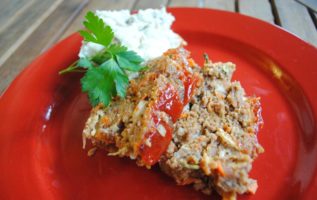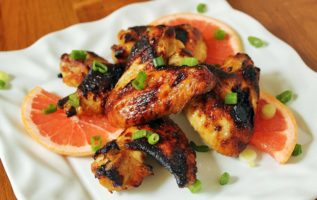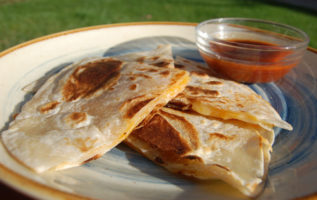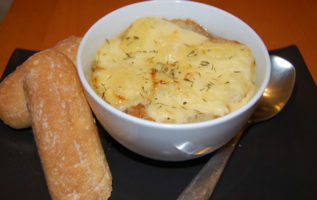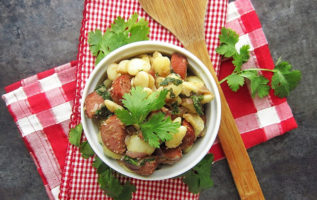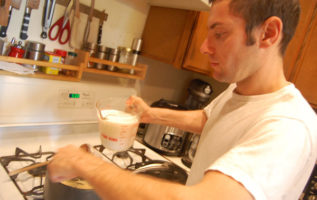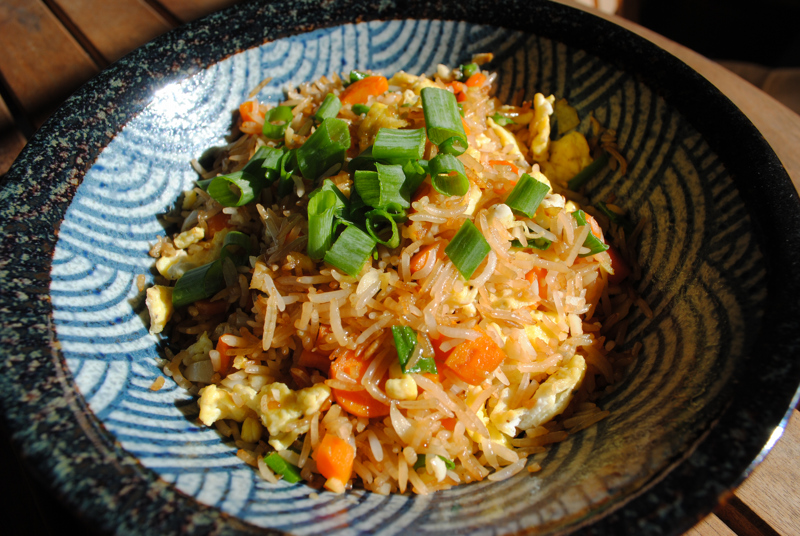
Leftovers are always a good thing in my book, and they become even better when they can be used to morph into a totally new dish. What’s better than that? When the new dish outshines the original from which those leftovers came.
That’s exactly the case with fried rice, a favorite in Chinese restaurants that is so easy to make at home that you may never order takeout again.
To make fried rice, you need first need plain old cooked rice. To get that foundation for this dish, you simply simmer or bake a medium- to long-grain white rice like basmati in water for about 20 minutes or, even easier, use a rice cooker, which can be bought for under $20.
Enjoy that first batch as a side, then prepare to enjoy it as a tasty new side or even main dish the next night after it has been refrigerated.
Fried rice is simply pre-cooked grains that have been cooked again in a small amount of oil in a pan. It’s called “fried” because the rice is cooked in the oil over moderately high heat, which is also known as – you got it – frying. This process is different from deep frying because we are not totally submerging the rice; we’re only lightly coating it with the oil. Fried rice like the kind found in Chinese restaurants takes on it signature brown color from the soy sauce used in making it, which also greatly enhances flavor.
Of course, rice and oil alone does not make a proper fried rice. Other ingredients usually found in the dish include cooked egg, ginger, vegetables and the aforementioned soy sauce.
But what I really dig about fried rice is that it can be a great canvas for other leftovers. Got some precooked chicken in the fridge, too? Throw it in the pan with the rice. Cooked shrimp, beef and even tofu also make great fried-rice companions.
Fried rice is one of the ultimate fridge cleaners, and besides being extremely inexpensive to make – think under a buck per serving – takes only about 10 minutes.
The next day, fried rice is easily reheated in a microwave so that the dish itself becomes a great leftover.
Does it get any better than that? Just wait till you try it.
Let’s fry some rice.
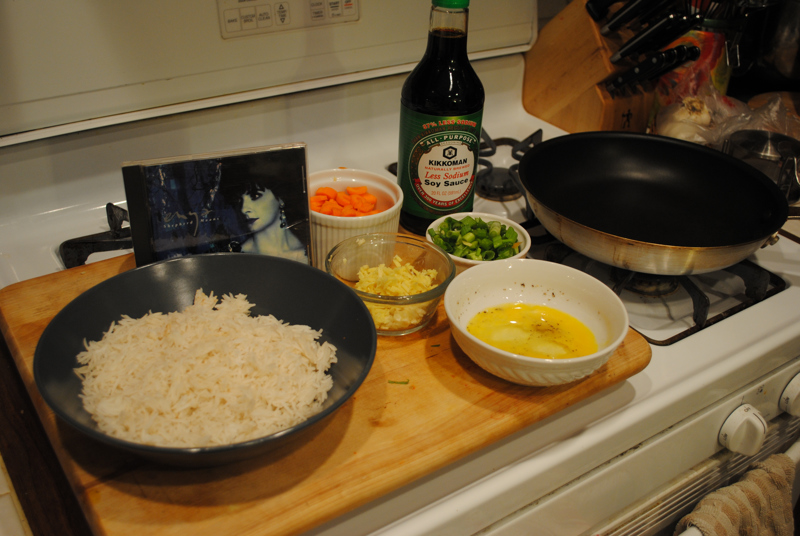
Fabulously Easy Fried Rice
(Makes 2 servings)
- 3 tablespoons vegetable oil
- 1 large egg, beaten and seasoned with salt and pepper
- 1 cup carrots or your choice of vegetables, chopped small
- 2 cups cooked white rice
- 2 tablespoons low-sodium soy sauce
- 1 tablespoon fresh ginger, finely chopped
- 1 tablespoon fresh garlic, finely chopped
- 1 cup chives, chopped
- Music to make it by: I’m in the mood for something calming; tonight it’s Enya’s “Shepherd Moons“
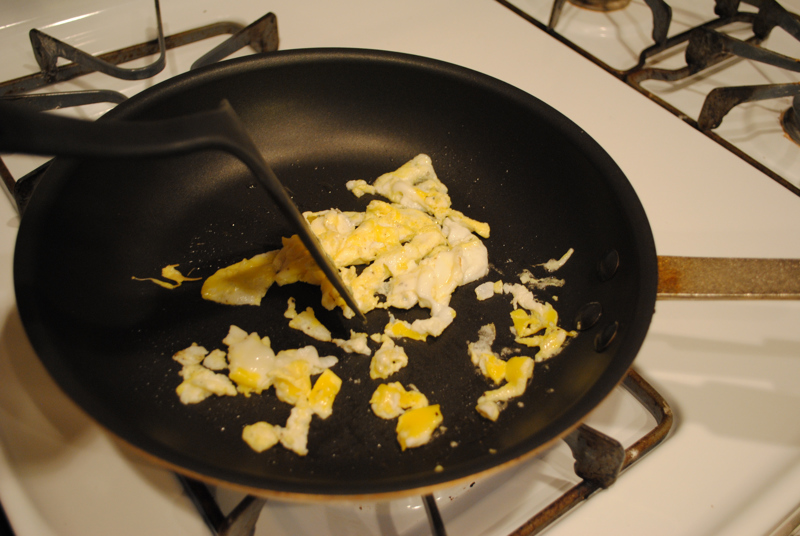
Step 1: For your first fried-rice experience, I recommend using a non-stick skillet. Grab one that’s at least 10 inches wide, heat over medium-high and add about 1 tablespoon of the oil. After the oil has heated for a minute or so and is good and hot, pour in the egg and cook it just as if you were making scrambled eggs. This should only take about a minute or two.
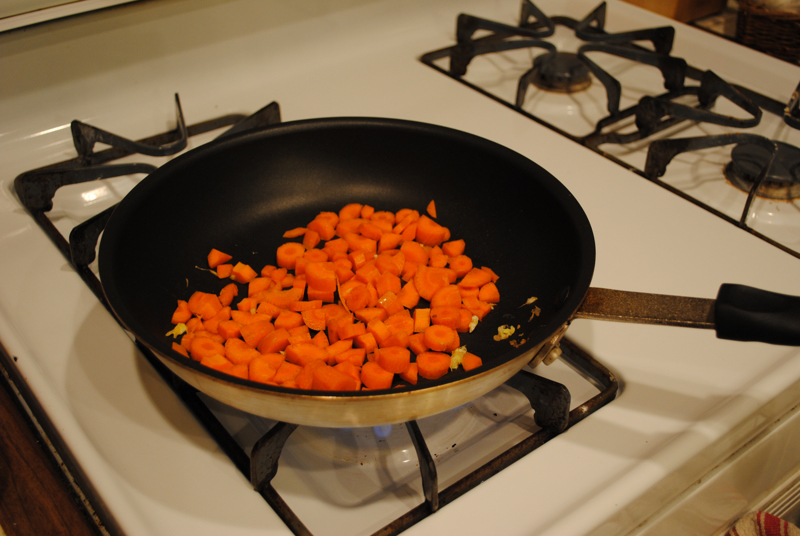
Step 2: When the egg is cooked, remove it from the pan and set it aside. Now dump in the vegetables and cook them for a minute or two, until they are hot and just slightly tender.
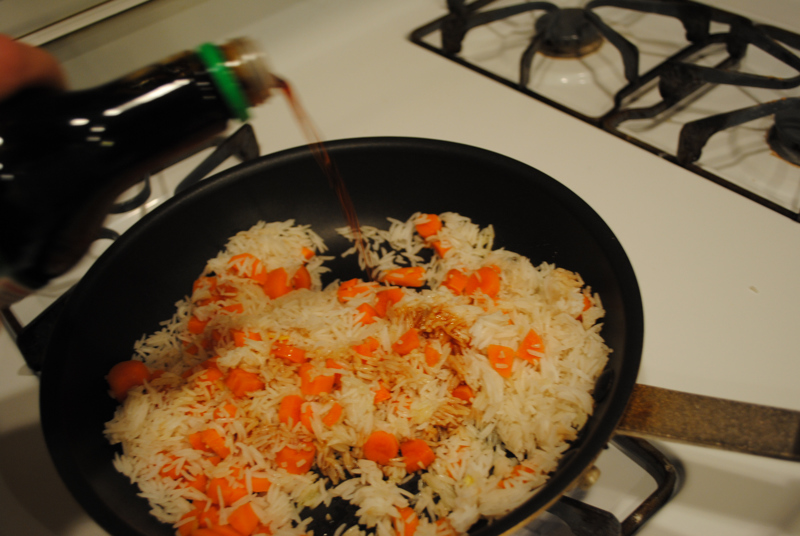
Step 3: Pour in the rest of the oil, wait a moment for it to get hot, then dump in the rice. Now pour in the soy sauce and cook the rice for about a minute, until it’s hot.
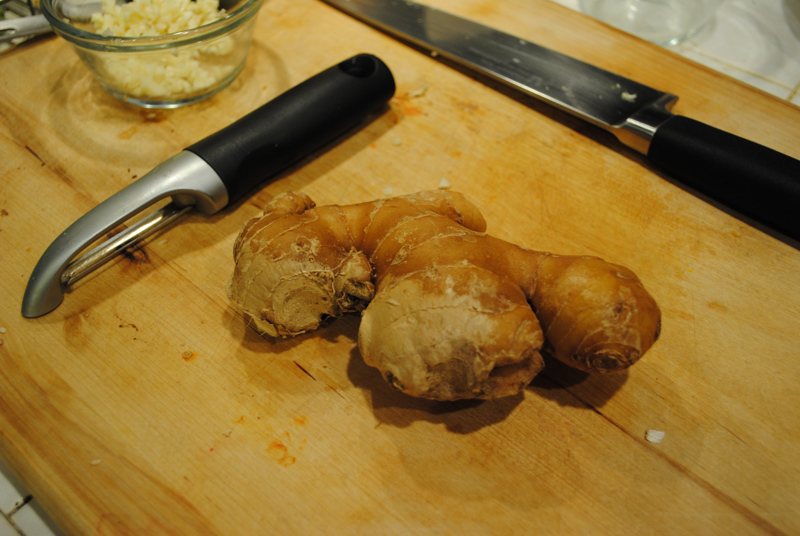
Step 4: Time for the ingredients that really make this dish shine: the ginger and garlic. Fresh ginger looks like a tube and tastes much more wonderful than it appears. To use, take off the out layer with a vegetable peeler, then mince the flesh below or force it through a garlic press. Dump in both ingredients and cook for a minute.
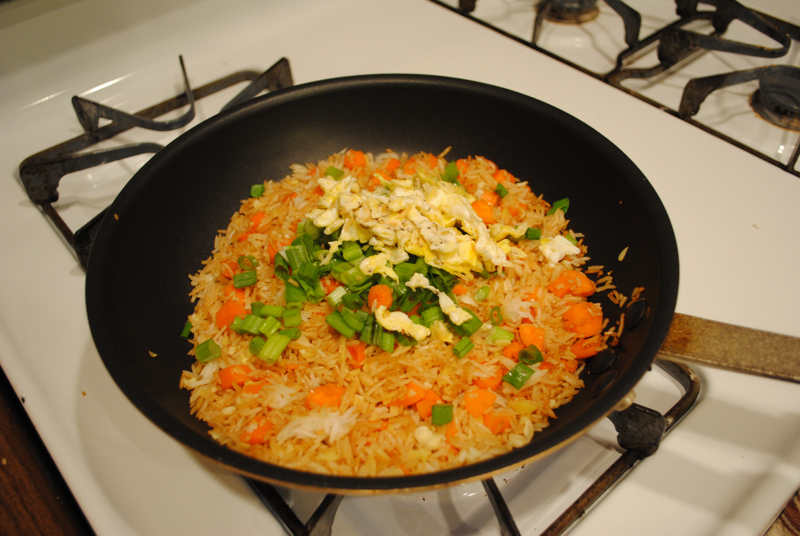
Step 5: Doesn’t this smell wonderful? Now all that’s left is to add most of the chives, put the eggs back into the pan and cook until everything is steaming hot.
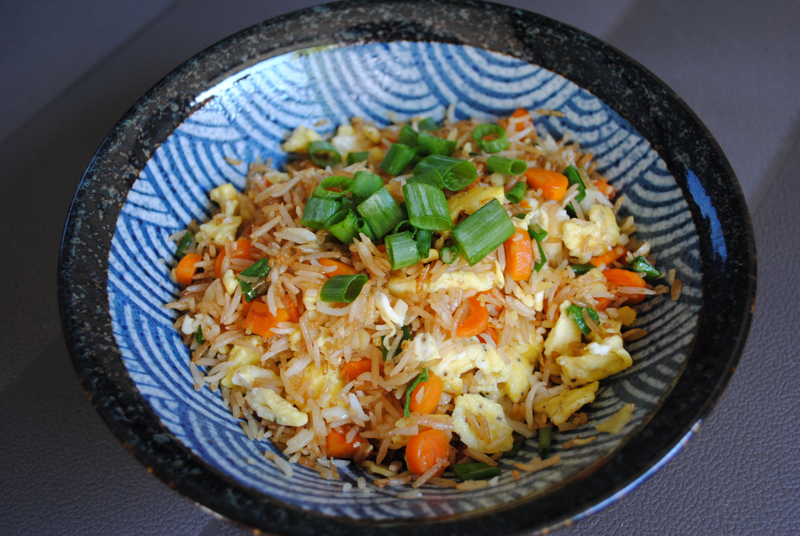
Congratulations: You’ve just made fried rice. All that’s left is to put everything in a bowl or plate, garnish with the rest of the chives, and dig in.
Did you try this recipe? Share your results or any tips in the comments area below.
Source: iwanttocook.com (defunct blog)






















